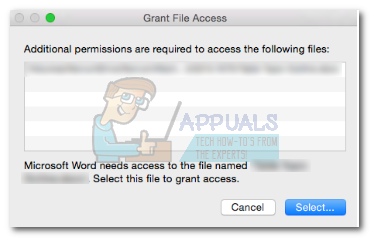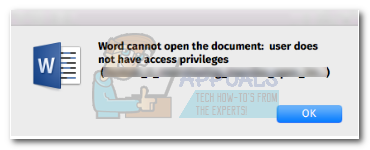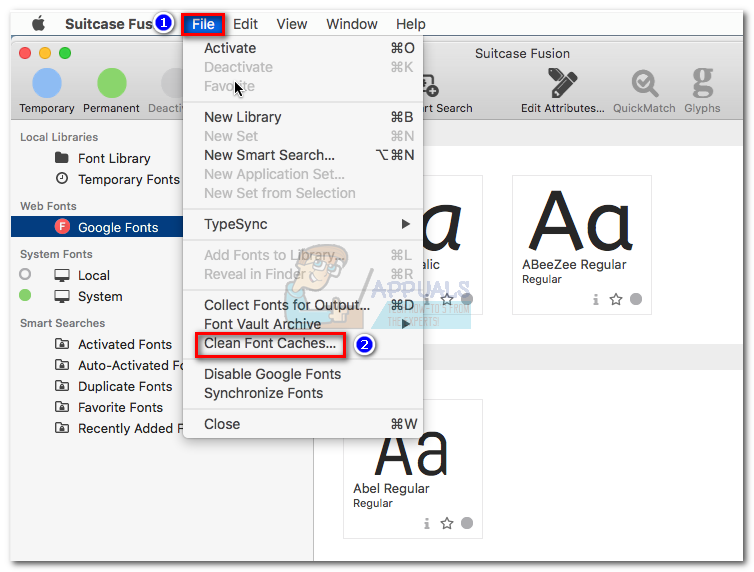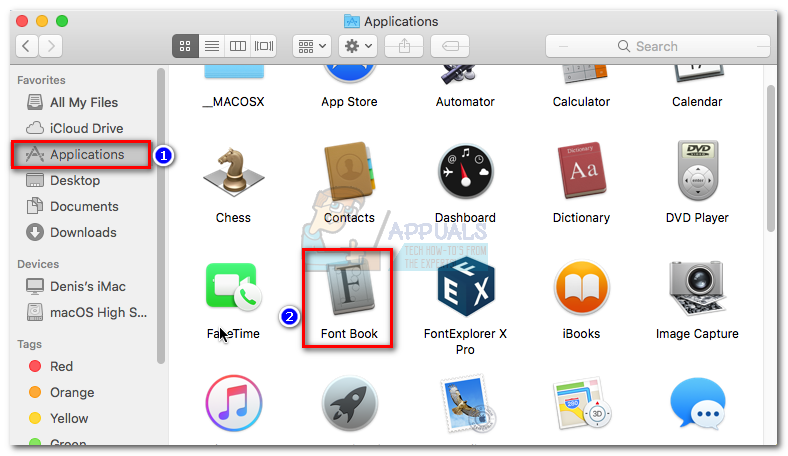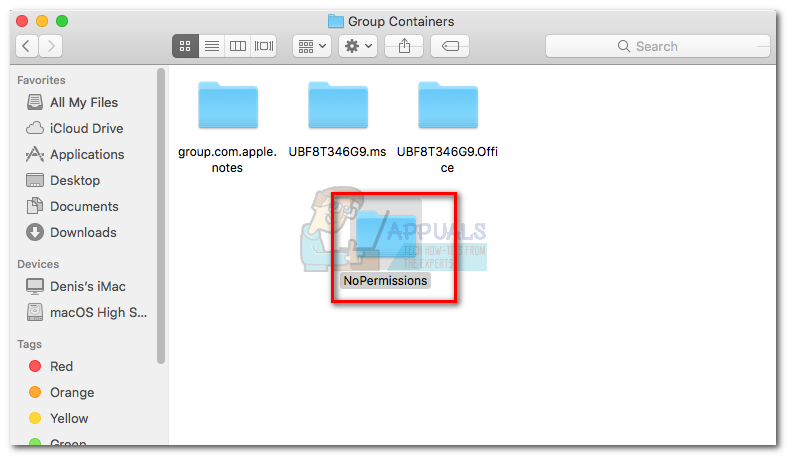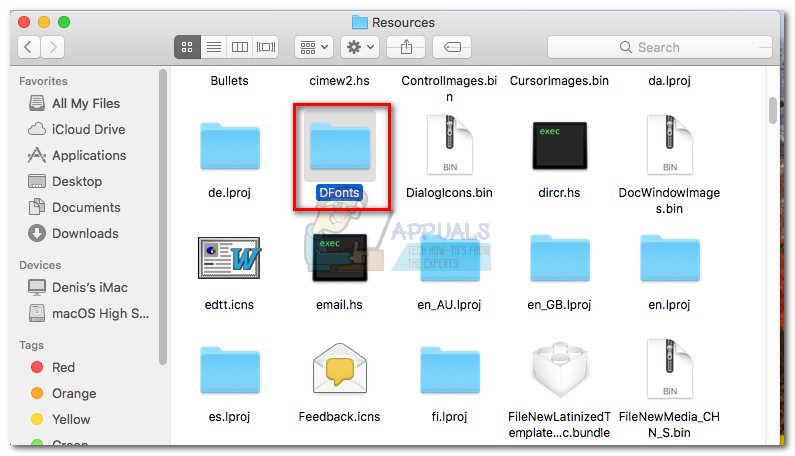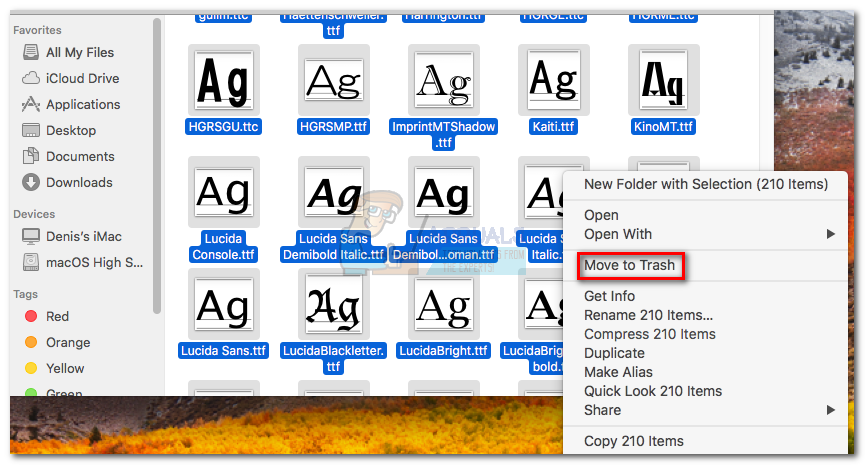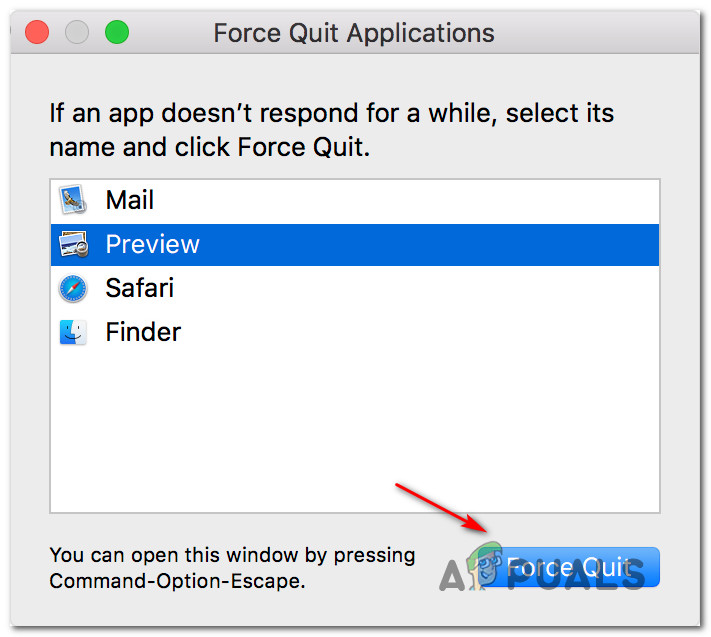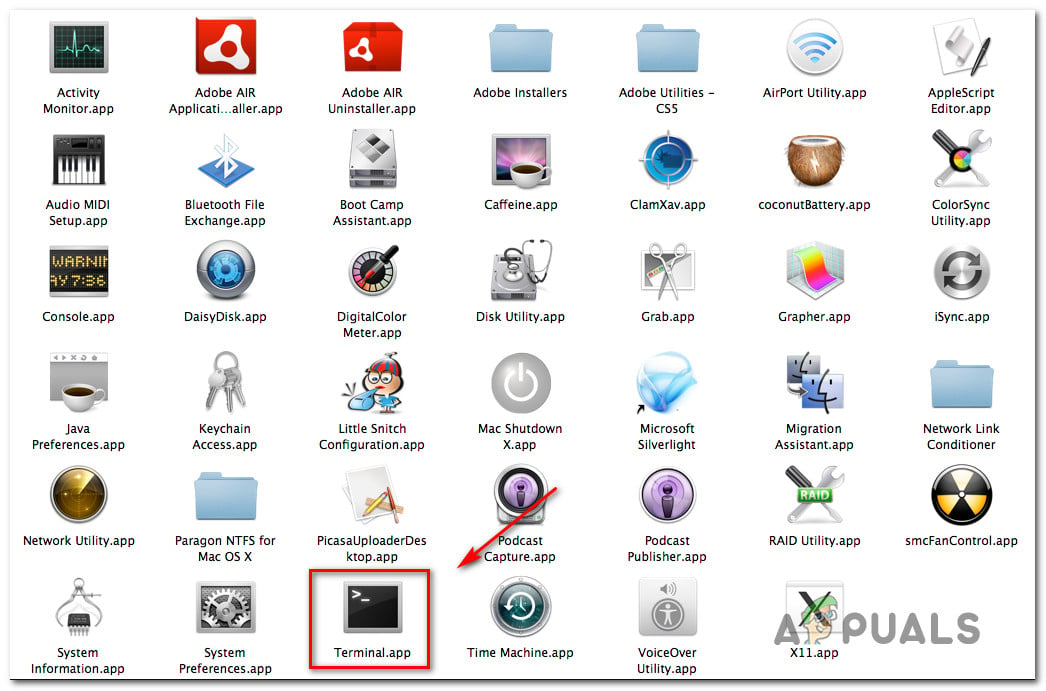When dealing with this issue, the user will be prompted with a popup asking to provide access privileges when opening a file with an Office 2016 program. If the user selects the file and clicks the Grant Acess button, the following error will appear:
As it turns out, the Grant Acess error is caused by the updated Apple sandboxing rules. Apple now uses sandboxing to limit various actions by tying them to a specific location. Application sandboxing is very effective in preventing viruses or other malware from affecting OS files. Following the new guidelines, every application that uses custom fonts must ensure that the fonts stay exclusive to that particular application. Apple no longer allows an application to install fonts for system-wide use. In the event that a system-wide font gets altered along the way, it will be regarded as a security violation and will be replaced at the next update. Starting with Office 2016, Microsoft had to comply with Apple’s rules in order to be able to sell the Office suite in the App store. Microsoft provides a set of fonts specifically for their software, which will get installed in a different location. However, most 3rd party font utilities have not been fully updated to work with the new sandbox rules and will cause conflicts seen as security violations by MacOS. It has been confirmed that 3rd party font management apps like Suitcase, Linotype Font Explorer, Extense, or FontExplorer X are the main culprits causing the Grant Access error with the Office 2016 suite. As of now, FontBook is the only font management utility that is specifically designed to work with Apple’s new security system. Note: Some users have reported that reducing the numbers of fonts in their 3rd party font management apps have made the issue disappear. If you have a lot of fonts (over 1000), try reducing their number. Then, restart your machine and try again. Below you have a suite of methods that will make the Grant Access error go away. If you have installed an external font management app (other than FontBook), but you don’t need it, follow Method 1 or Method 2. In the event that you’re relying on a 3rd party font management app, follow Method 3 or Method 4. Update: We’ve added another method that will address the Grant Access error for uses that are encountering the issue with macOS 10.13 High Sierra or above. If this is applicable, move directly to Method 5.
Method 1: Disabling fonts from 3rd party fonts management apps
Since font management apps like FontExplorer X, Universal Type Server, Suitcase or Extense are causing the Grant Access error, disabling the fonts in those applications will usually make the issue go away for good. If you’re using Suitcase Fusion, you can solve this issue easily by clearing the font caches. To do this, go open Suitcase Fusion and go to File > Clean Font Caches. Then, restart your system and the office files should open normally. Note: This fix will only work temporarily. You might be required to repeat the procedure every once in a while. If you’re using FontExplorer X, Universal Type Server or Extense, you have little choice but to open those applications and disable all fonts. Then, restart your device and try opening the files that were previously showing the error. If that isn’t enough, uninstall the external font management app and follow the instructions below:
Method 2: Booting from recovery partition to reset folder permissions
If the method above has been unsuccessful in removing the Grant Access error, let’s try booting from recovery mode and using the Terminal utility to reset the folder permissions and ACLs. This method has proved to be successful for a lot of users that were still struggling with the error after removing the 3rd party font manager. Here’s what you need to do:
Method 3: Avoiding Apple’s sandbox requirements
In previous Mac Office versions (older than Office 2016), users were able to save files in any location and use any font without warnings and permission requests. But this is no longer possible because of the new sandbox requirements. People that use VBA with Excel are severely affected since they are constantly prompted for permissions when running their scripts. However, Mac has some locations that you can use to avoid those access prompts. These locations allow VBA enthusiasts to run their scripts freely without additional user interaction. Fortunately, we can also use these locations to bypass the grant access error. The trick is, this location is not easily available, so we’ll have to go through additional steps to make it more accessible. One example of a safe location that avoids Office permission prompts is : /Users / YourUsername / Library / Group Containers /UBF8T346G9.Office You can use this folder to share data between Office programs or with a third party application since it has both read and write access. Here’s a quick guide on using this location to bypass the Grant Access error: Note: This guide is only confirmed to work with Excel files, but should theoretically work with other files types from the Office 2016 suite. Note: For easy access, you can select the folder and press Command + Ctrl + T to automatically add it to Favorites in Finder.
Method 4: Pulling Microsoft from the resource folder (Temporary)
If your work revolves around using an external font management app, then removing it from your system is not an option. Fortunately, some users have been able to make the grant permissions issue go away by removing Microsoft’s fonts from the resource folder. However, this fix will only be temporary. When you’ll allow the next Office update, the fonts will get reinstalled in the package and the error will come back. Warning: Some users have reported Word crashes after following this method. If you don’t back up the fonts as we’ll do in the steps below, you’ll need reinstall/repair the Office suite if anything goes wrong. Here’s a quick guide on pulling the fonts from the resources folder:
Method 5: Clearing the Mac OS Font Caches via Terminal
Some affected users that have been encountering this issue with macOS 10.13 High Sierra or above have reported that the issue has been resolved after they cleaned the font caches by using the Terminal. After doing this and restarting their Mac, most affected users have reported that the Grant access error has stopped occurring. If this scenario is applicable to your particular scenario, here’s what you need to do:
How to Fix Error Reference Source not Found when Printing from Office 2010,…What is Grant Easy Access in TeamViewer and Is it Safe?Should I Grant Network Access to Akamai NetSession (netsession_win.exe)?How to Fix ‘The Application-Specific Permission Settings do not Grant Local…
